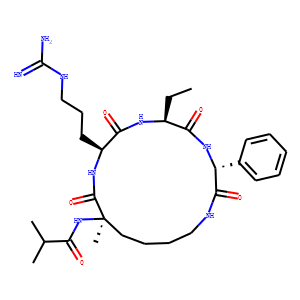| Reference | 1. Cell Stem Cell. 2016 Apr 7;18(4):481-94. doi: 10.1016/j.stem.2016.02.004. Epub 2016 Mar 17.<br />
MLL1 Inhibition Reprograms Epiblast Stem Cells to Naive Pluripotency.<br />
Zhang H(1), Gayen S(2), Xiong J(1), Zhou B(1), Shanmugam AK(1), Sun Y(1), Karatas H(3), Liu L(3), Rao RC(4), Wang S(3), Nesvizhskii AI(1), Kalantry S(2), Dou Y(5).<br />
Author information:<br />
(1)Department of Pathology, University of Michigan, Ann Arbor, MI 48109, USA. (2)Department of Human Genetics, University of Michigan, Ann Arbor, MI 48109, USA. (3)Department of Internal Medicine and Pharmacology, University of Michigan, Ann Arbor, MI 48109, USA. (4)Department of Pathology, University of Michigan, Ann Arbor, MI 48109, USA; Ophthalmology and Visual Sciences, University of Michigan, Ann Arbor, MI 48109, USA. (5)Department of Pathology, University of Michigan, Ann Arbor, MI 48109, USA. Electronic address: [email protected].<br />
Comment in<br />
Stem Cell Investig. 2016 Oct 20;3:58.<br />
Stem Cell Investig. 2016 Oct 21;3:63.<br />
The interconversion between naive and primed pluripotent states is accompanied by drastic epigenetic rearrangements. However, it is unclear whether intrinsic epigenetic events can drive reprogramming to naive pluripotency or if distinct chromatin states are instead simply a reflection of discrete pluripotent states. Here, we show that blocking histone H3K4 methyltransferase MLL1 activity with the small-molecule inhibitor MM-401 reprograms mouse epiblast stem cells (EpiSCs) to naive pluripotency. This reversion is highly efficient and synchronized, with more than 50% of treated EpiSCs exhibiting features of naive embryonic stem cells (ESCs) within 3 days. Reverted ESCs reactivate the silenced X chromosome and contribute to embryos following blastocyst injection, generating germline-competent chimeras. Importantly, blocking MLL1 leads to global redistribution of H3K4me1 at enhancers and represses lineage determinant factors and EpiSC markers, which indirectly regulate ESC transcription circuitry. These findings show that discrete perturbation of H3K4 methylation is sufficient to drive reprogramming to naive pluripotency.<br />
<br />
2. Mol Cell. 2014 Jan 23;53(2):247-61. doi: 10.1016/j.molcel.2013.12.001. Epub 2014 Jan 2.<br />
Targeting MLL1 H3K4 methyltransferase activity in mixed-lineage leukemia.<br />
Cao F(1), Townsend EC(1), Karatas H(2), Xu J(1), Li L(3), Lee S(1), Liu L(2), Chen Y(4), Ouillette P(5), Zhu J(6), Hess JL(7), Atadja P(8), Lei M(9), Qin ZS(3), Malek S(5), Wang S(10), Dou Y(11).<br />
Author information:<br />
(1)Department of Pathology, University of Michigan, Ann Arbor, MI 48109, USA. (2)Department of Medicinal Chemistry, University of Michigan, Ann Arbor, MI 48109, USA; Department of Internal Medicine, University of Michigan, Ann Arbor, MI 48109, USA; Comprehensive Cancer Center, University of Michigan, Ann Arbor, MI 48109, USA. (3)Department of Biostatistics and Bioinformatics, Rollins School of Public Health, Emory University, Atlanta, GA 30322, USA. (4)National Center for Protein Science Shanghai, State Key Laboratory of Molecular Biology, Institute of Biochemistry and Cell Biology, Shanghai Institutes for Biological Sciences, Chinese Academy of Sciences, Shanghai 200031, China. (5)Department of Internal Medicine, University of Michigan, Ann Arbor, MI 48109, USA; Comprehensive Cancer Center, University of Michigan, Ann Arbor, MI 48109, USA. (6)Interdisciplinary Research Center of Biology and Chemistry, Chinese Academy of Sciences, 345 Lingling Road, Shanghai 200032, China. (7)Indiana University School of Medicine, Indianapolis, IN 46202-3082, USA. (8)Novartis Institutes for BioMedical Research, Shanghai Novartis Research Inc., Shanghai 201203, China. (9)National Center for Protein Science Shanghai, State Key Laboratory of Molecular Biology, Institute of Biochemistry and Cell Biology, Shanghai Institutes for Biological Sciences, Chinese Academy of Sciences, Shanghai 200031, China; Department of Biological Chemistry, University of Michigan, Ann Arbor, MI 48109, USA. (10)Department of Medicinal Chemistry, University of Michigan, Ann Arbor, MI 48109, USA; Department of Internal Medicine, University of Michigan, Ann Arbor, MI 48109, USA; Comprehensive Cancer Center, University of Michigan, Ann Arbor, MI 48109, USA. Electronic address: [email protected]. (11)Department of Pathology, University of Michigan, Ann Arbor, MI 48109, USA; Department of Biological Chemistry, University of Michigan, Ann Arbor, MI 48109, USA. Electronic address: [email protected].<br />
Here we report a comprehensive characterization of our recently developed inhibitor MM-401 that targets the MLL1 H3K4 methyltransferase activity. MM-401 is able to specifically inhibit MLL1 activity by blocking MLL1-WDR5 interaction and thus the complex assembly. This targeting strategy does not affect other mixed-lineage leukemia (MLL) family histone methyltransferases (HMTs), revealing a unique regulatory feature for the MLL1 complex. Using MM-401 and its enantiomer control MM-NC-401, we show that inhibiting MLL1 methyltransferase activity specifically blocks proliferation of MLL cells by inducing cell-cycle arrest, apoptosis, and myeloid differentiation without general toxicity to normal bone marrow cells or non-MLL cells. More importantly, transcriptome analyses show that MM-401 induces changes in gene expression similar to those of MLL1 deletion, supporting a predominant role of MLL1 activity in regulating MLL1-dependent leukemia transcription program. We envision broad applications for MM-401 in basic and translational research.<br />
|

